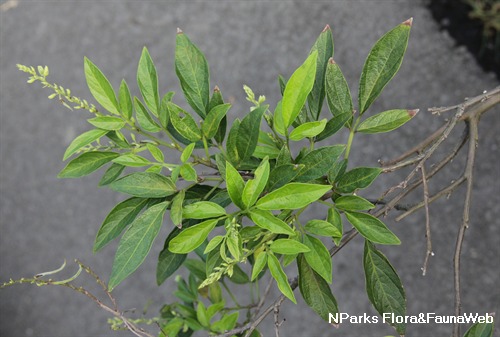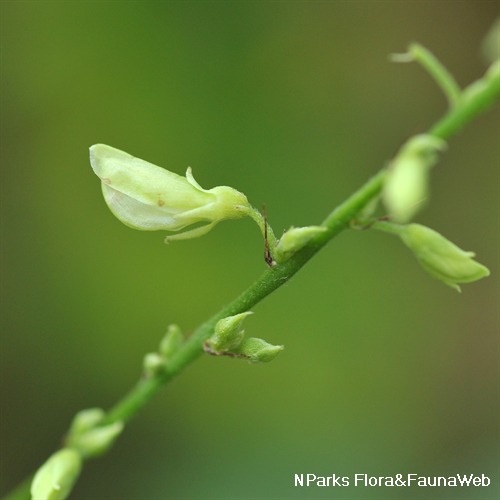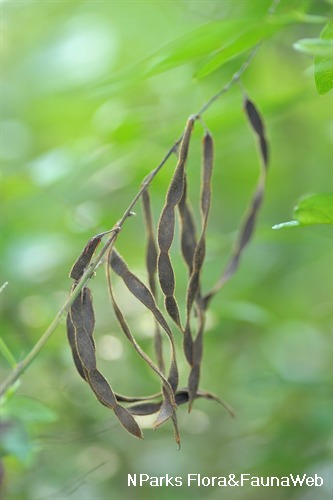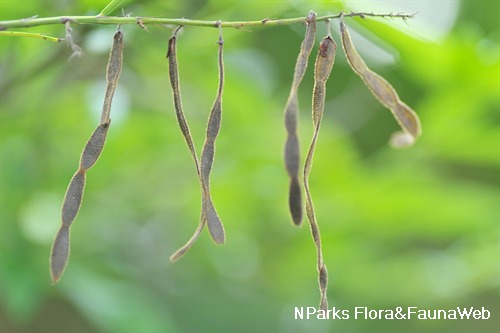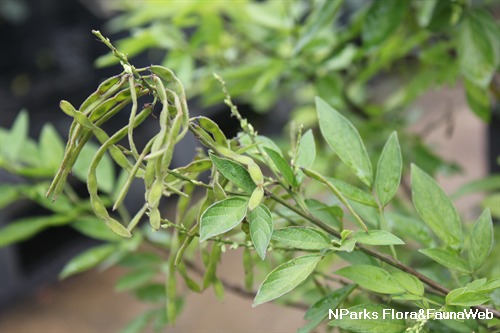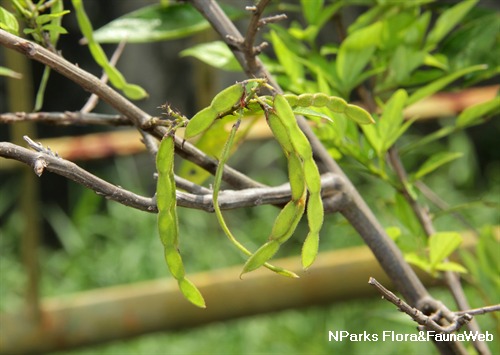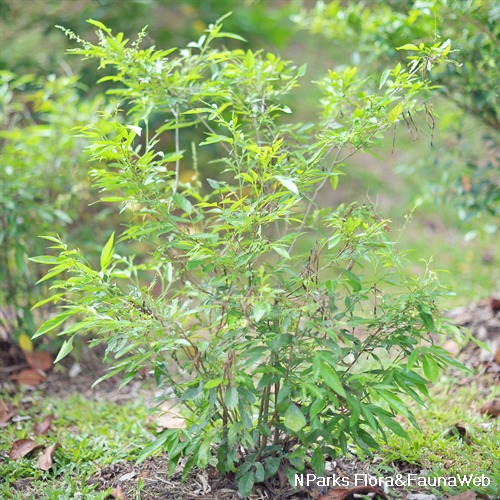
Back
Ohwia caudata (Thunb.) H.Ohashi
| Family Name: | Fabaceae (Leguminosae) |
| Synonyms: | Desmodium caudatum (Thunb.) DC. |
| Common Name: | 小槐花 |
Name
Classifications and Characteristics
| Plant Division | Angiosperms (Flowering Seed Plants) (Dicotyledon) |
|---|---|
| Plant Growth Form | Shrub |
| Mode of Nutrition | Autotrophic |
| Plant Shape | Rounded |
| Maximum Height | 1 m to 2 m |
Biogeography
| Native Distribution | China, Japan, Korea, Taiwan, Bhutan, India, Sri Lanka, Myanmar, Indonesia, Malaysia |
|---|---|
| Native Habitat | Terrestrial |
| Preferred Climate Zone | Tropical, Temperate |
| Local Conservation Status | Non-native (Spontaneous (Naturalised)) |
Description and Ethnobotany
| Growth Form | Shrub with an erect growth habit, growing up to 1-2 m tall. |
|---|---|
| Crown | Dense crown with many branches. |
| Foliage | Compound leaf is composed of 3 lanceolate to oblong leaflets (5-9 cm long, 1.5-2.5 cm wide) with terminal leaflet larger than lateral ones. The petiole (1.5-4 cm long) often has narrow wings. |
| Flowers | Greenish to yellowish white flowers are shaped like a keel. Flowers are arranged in a spike-like inflorescence known as a raceme (5-30 cm long). The rachis (inflorescence stalk) is densely covered in soft hairs, and flowers are arranged in pairs along the rachis. |
| Fruit | Brown, furry pods are linear, narrow and flattened (5-7 cm long). Pods are divided into 4-8 segments. |
| Cultivation | This species grows best in moist, but well-drained soils. It forms a symbiotic relationship with nitrogen-fixing bacteria, allowing it to grow on infertile soils. In a crop rotation system, this species can be planted to add nitrogen to the soil. |
| Ethnobotanical Uses | Medicinal: According to Chinese folk medicine, the whole plant (especially the roots) can be used to treat digestion-related problems. Sasaki et al. (2012) found that the roots contain flavonoids with anti-bacterial activity effective against methicillin-resistant Staphylococcus aureus (a bacterial strain resistant to the antibiotic methicillin). <2> |
Plant Care and Propagation
| Light Preference | Full Sun |
|---|---|
| Water Preference | Moderate Water |
| Rootzone Tolerance | Well-Drained Soils, Poor Infertile Soils |
| Propagation Method | Seed |
Foliar
| Mature Foliage Colour(s) | Green |
|---|---|
| Mature Foliage Texture(s) | Smooth |
| Foliar Type | Compound (Trifoliate) |
| Foliar Attachment to Stem | Petiolate |
| Foliar Shape(s) | Non-Palm Foliage (Lanceolate, Oblong) |
| Foliar Venation | Pinnate / Net |
| Foliar Apex - Tip | Acute, Acuminate |
| Foliar Base | Cuneate |
Floral (Angiosperm)
| Flower & Plant Sexuality | Bisexual Flowers |
| Flower Colour(s) | White |
|---|---|
| Flower Texture(s) | Smooth |
| Flower Grouping | Cluster / Inflorescence |
| Flower Location | Axillary, Terminal |
| Flower Symmetry | Bilateral |
| Individual Flower Shape | Papilionaceous / Pea-shaped |
| Inflorescence Type | Raceme |
| Flowering Habit | Polycarpic |
Fruit, Seed and Spore
| Mature Fruit Colour(s) | Brown |
|---|---|
| Mature Fruit Texture(s) | Velvety / Furry / Tomentose |
| Fruit Classification | Simple Fruit |
| Fruit Type |
References
| References | <1> Lindsay, S. et al. (2022). Flora of Singapore: Checklist and bibliography. Gardens’ Bulletin Singapore 74(Suppl. 1): 3–860. <2> Sasaki, H., Kashiwada, Y., Shibata, H., Takaishi, Y. . 2012. Prenylated flavonoids from Desmodium caudatum and evaluation of their anti-MRSA activity. Phytochemistry. 82. 136-142 |
|---|
Image Repository
Others
| Master ID | 29606 |
|---|---|
| Species ID | 3915 |
| Flora Disclaimer | The information in this website has been compiled from reliable sources, such as reference works on medicinal plants. It is not a substitute for medical advice or treatment and NParks does not purport to provide any medical advice. Readers should always consult his/her physician before using or consuming a plant for medicinal purposes. |

